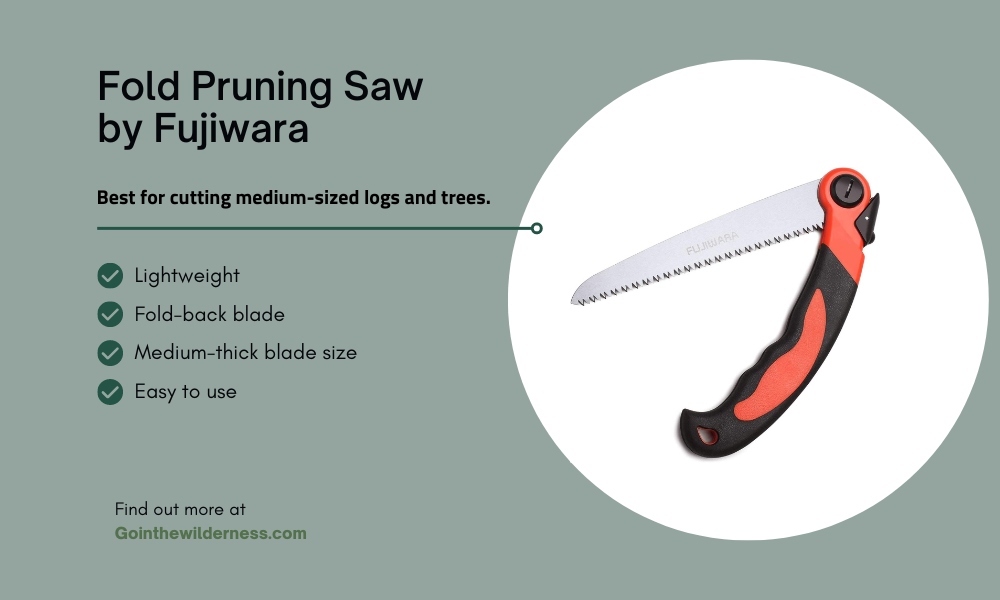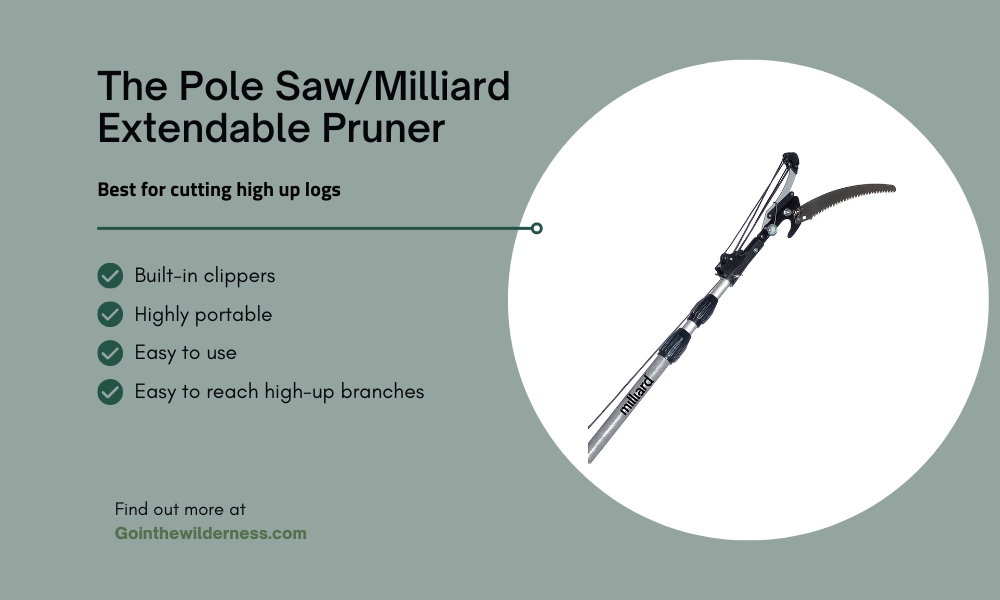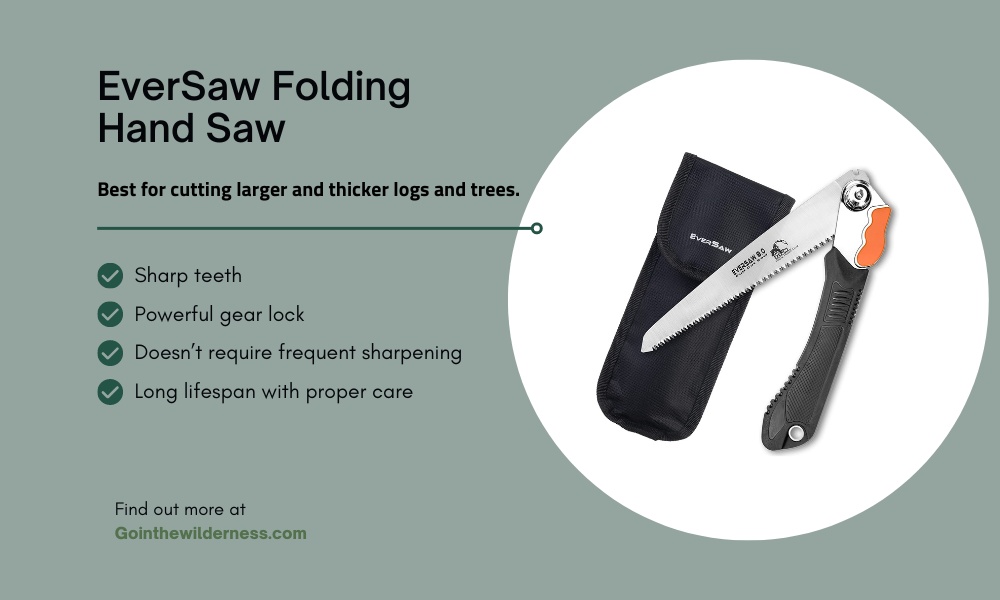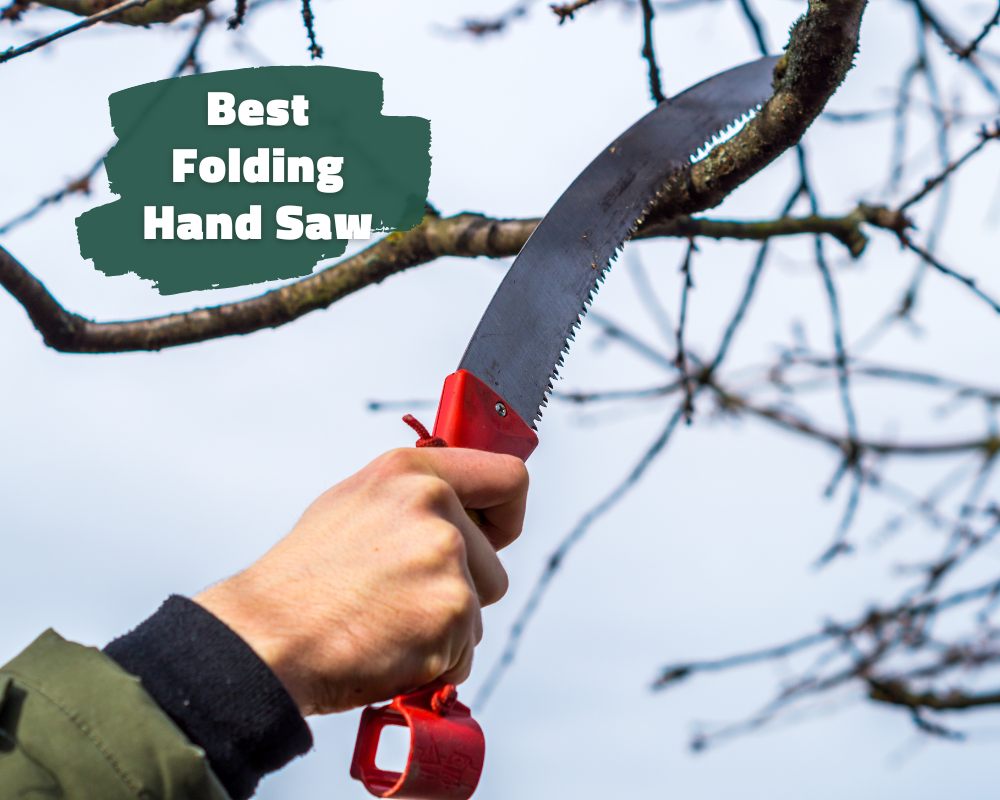Folding hand saws are practical, affordable, and easy to carry during bushcrafting. But, not all folding hand saws are as effective as others, and their benefits hinge on you using your saw safely and effectively.
In this article, you’ll learn everything you need to know about folding hand saws: the key features to look out for, our favorite products on the market, how to use them to cut trees properly, and how to maintain them to maximize their efficacy and longevity.
The Importance of a Good Hand Saw for Cutting Trees
A good hand saw brings many important benefits when it comes to cutting trees. These include:
- Easy transportation: Most hand saws are easily transportable. They are light, small, and aren’t powered by heavy batteries. This is handy for bushcraft as you can simply put your saw in your toolbox and set off. Given this portability, you shouldn’t have too much trouble carrying a hand saw over difficult terrain or to hard-to-reach locations.
- No need for electricity: Hand saws are powered by human force alone, so there’s no need for batteries, power cables, or other circuits. This adds to their ease of transportation and means you can always rely on your hand saw to work—it won’t run out of power!
- Safety: Given that hand saws require no electricity, they are a lot safer to use than other types of saw. This is especially a factor during bushcraft where your kit could get hot or wet; electrical saws could malfunction and cause damage.
- Affordability: Compared to power saws, hand saws are less expensive to buy.
- Elbow grease and fun: A good hand saw lets you enjoy the challenge of using your physical strength and skill to get the job done. It’s very rewarding and feels more authentic to an all-nature bushcraft experience.
Top Factors to Consider When Choosing a Folding Hand Saw for Tree Cutting
Choosing the right folding hand saw for you requires that you take some important features into consideration. These include:
- Material: High-carbon steel is one of the best materials for folding hand saws. This is because it lasts longer and the carbon content protects the saw from rust, keeping it at top quality for a longer time.
- Blade length: If you are a camper who needs to cut thick logs, you should go for a folding hand saw that has sharper edges and longer blades measuring 47-52cm. If you only do trimming, you can go for a folding hand saw with a blade length of 38-41cm.
- Teeth alignment: Saws’ teeth are designed to chop trees in either one direction or in both directions. Consider which option will best suit your purposes.
- Weight and handling: A lightweight hand saw might be best for you if you want to keep your kit light. Also bear ergonomics in mind; folding saws with longer handles are easier to handle than shorter ones.
- Blade swing pattern: In a good folding hand saw, the blades shouldn’t swing when you close them and they shouldn’t close while you are using them. This is an important safety consideration because a dangling blade can cut you.
- Blade reach: It’s not easy to cut high-up branches with any kind of saw—so if you’ll be doing this a lot, you should consider buying a folding hand saw with an extended pruner. This helps you access higher branches without needing to climb trees or a ladder.
- Gear lock: A gear lock lets you lock your blade in place as you use it. Not only is this highly practical, but it also helps your blade last longer. Any feature that maximizes a saw’s lifespan scores sustainability points!
Our Top Picks: The Best Folding Hand Saws for Cutting Trees in Different Scenarios
Out of all the folding hand saws on the market, our experts recommend the following three.
Best for Medium-Sized Logs and Portability – Fold Pruning Saw by Fujiwara

This folding saw has a lightweight, fold-back blade, and a medium-thick blade size. It is very portable and light, and best for cutting medium-sized logs and trees. The handle design makes it easy to use, the blades stay in place and don’t swing out or swing in, and it is flexible and durable overall.
Best for High-up Logs – The Pole Saw/Milliard Extendable Pruner

This saw has a pole extender which helps you reach high-up branches. It also has built-in clippers which help keep the blade in place during cutting. If you want to cut down small tree branches, tip fruits off a high tree, or anything similar, then this is the best saw for you. It’s also highly portable and easy to use, even for first-timers.
Best for Large Logs and Longevity — EverSaw Folding Hand Saw

This saw has sharp teeth with a powerful gear lock that keeps it in place. It can cut down larger and thicker logs and trees. It doesn’t require frequent sharpening—but be careful not to overuse the blade in a single session, as it could bend if used for a prolonged time. When used and cared for correctly, this saw has a long lifespan!
How to Properly Use a Folding Hand Saw for Cutting Trees: Tips and Techniques
Follow these tips to use a hand saw safely and effectively when cutting trees.
- Wear protective gear including goggles and gloves. Goggles protect your eyes from flying debris; gloves protect your hands from the sharp blades. If you’re cutting a very tall and thick tree, you should wear a helmet as well.
- Hold the saw handle firmly—find the position you want to prune and then hold the handle firmly so that the blade stays on task and away from you.
- Stand in the right place and stand firmly. Don’t stand too far from the wood you’re cutting; it’s easier to control a folding hand saw when you’re at closer proximity. (Don’t go too close, though). Also, make sure to stabilize your weight, especially if you’re on a ladder. Don’t overreach while on a ladder as you could fall off.
- Be precise with the cuts you make. It is most effective to be careful and cut at the precise angle you need, rather than cutting all over the place. If you can, look out for nature as well: try not to remove the collars of branches (the collars attach a branch to a trunk) since doing so can prevent a shrub from healing.
- Cut with patience and at the right speed. Don’t cut too fast or too slow, and keep your cutting speed consistent. Also, wait until you’ve finished cutting before releasing a branch; otherwise, the bark will tear as the weight of the branch pulls down on it. This can cause accidents and damage.
- Take breaks if you need to. If you’re feeling tired from sawing, take a rest. Being alert is very important in this type of task; if you carry on when tired you’ll be at more risk of accident or injury.
Maintenance and Care Tips for Your Folding Hand Saw: Ensuring Longevity and Efficiency
Properly caring for your hand saw will ensure it works better and lasts longer. Here’s how to maintain it.
- Store your saw in a dry place. Rust and water damage can occur if you’re not careful, so make sure to store your saw in a cool, dry place. In most cases, the interior of your toolbox will suffice!
- Lubricate your saw. This is a core maintenance practice. Use gun oil or another kind of oil to wipe the blades and oil the hinges. Clean your saw properly after.
- Don’t forget to wax/oil the handles, the inner areas, and all the swinging parts. This prevents corrosion, rust, and stiffness. You can also use oil instead of water to remove stains on the handle.
- Scrape rust off the blade. This will keep your blade in tip-top condition. You can use a razor to do the scraping. Once done, lubricate the blade with some oil.
- Wipe stains off the blade. You can use steel wool and sandpaper for this task. Make sure to finish off by adding wax or oil to the blade.
- Sharpen the saw regularly. Don’t use your saw if it’s blunt or faulty as you could damage it. Sharpen your saw regularly and be quick to replace the damaged or worn-out parts. If your saw’s extremely worn out, you should buy a new one.
Frequently Asked Questions About Folding Hand Saws for Cutting Trees
How Do I Clean My Saw?
Cleaning a saw is pretty similar to how you clean a hunting knife. You can clean your saw with warm soapy water or using an old rag. If there are stains on your saw, use a razor or scrub brush and/or alcohol to remove them. Be sure to lubricate with some oil afterwards.
What Is a Pull Stroke?
A pull stroke is a cutting action which involves pulling a saw. This is a Japanese sawing method which helps a straight blade make more precise cuts due to pressure from the pull.
How Do I Tighten or Loosen the Blades?
This can be done with a simple flathead screwdriver. Make sure you don’t tighten the screws too tightly or too loosely.
Can I Replace the Blades?
You can replace a saw’s blades. However, the cost of new blades plus the shipping fee can often come close to the cost of a new saw, so it might just be worth buying a new saw!
Is a Folding Blade Safe to Use?
If you follow the safety steps outlined in this article, it is safe to use a folding hand saw.
I am Bruno. Navigating the urban rush by day, I find peace under the stars by night. Alongside my loyal companion and co-adventurer Lilith, we explore the balance between city life and nature’s embrace. Through writing and films, I delve into bushcraft and the wild’s allure.
GointheWilderness is my bridge between these two realms, guiding you to reconnect with your innate wilderness.
Eden is here and now; join us in rediscovering it.

